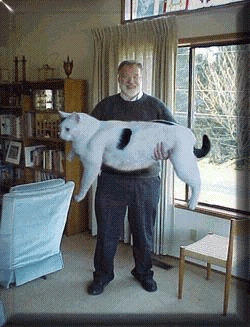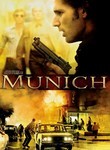Know When to Fold 'em
Speaking of movie stars, I spent the evening listening to Jane Fonda, who is on a speaking tour in promotion of her new autobiography, My Life So Far. I didn’t know she had written a book that’s been the number one seller in the country for the past two weeks, nor did I know she's out promoting it. Even if I had known, I wouldn’t have gone out of my way to see her, if it hadn’t been for a coworker and friend who issued a last minute invite to me. Of course, I ended up being terribly glad that I went, both for the company and the speaker.
The event was well-attended, perhaps in part by those hoping to see another tobacco spitting incident, though her detractors did not have a strong presence. The vast majority were Fonda's willing parishioners. I did see a lone guy outside A Clean and Well Lighted Place for Books (stupid name, I know, and always-rude and overbearing clerks, but hey, they bring in some interesting folks) who was bearing a sign blaming Fonda for everything
 under the sun, from the hole in the ozone layer to the propensity of milk to rot when left out. Well, I’m being facetious, but honestly his sign was so laden with text that I couldn’t bear the idea of standing there and reading it all. A few words jumped out at me—genocide, Cambodia … I dunno. It just seemed like a lot to place on the shoulders of someone, specifically a woman,whose main crime in life seems to have been a willingness to speak her mind at a time of social upheaval. The way she put it is that “we’re not supposed to be perfect. We’re supposed to be complete. I realized good enough is good enough.” She was talking about her ill-fated relationships with the men in her life, but I felt it was a comment that one could easily take to heart in regards to a lot of things.
under the sun, from the hole in the ozone layer to the propensity of milk to rot when left out. Well, I’m being facetious, but honestly his sign was so laden with text that I couldn’t bear the idea of standing there and reading it all. A few words jumped out at me—genocide, Cambodia … I dunno. It just seemed like a lot to place on the shoulders of someone, specifically a woman,whose main crime in life seems to have been a willingness to speak her mind at a time of social upheaval. The way she put it is that “we’re not supposed to be perfect. We’re supposed to be complete. I realized good enough is good enough.” She was talking about her ill-fated relationships with the men in her life, but I felt it was a comment that one could easily take to heart in regards to a lot of things.What I liked most about Fonda is that she seemed extremely open, in a way that’s rare. Sure she’s an accomplished activist-actress, but she’s also 67 years old, which is hard for me to believe. She looked fantastic in her moss green jacket and green tinted sunglasses. Whatever skeletons she’s got left in her closet would probably crumble into powdery crumbs if exposed to anything as tepid as a sneeze.
Fonda spoke very briefly yet warmly to those of us gathered—well over 100 crammed in that clean and well-lit place—and then went straight to questions, which ranged from queries about her personal life to her political activities, and one or two on acting. Sadly no one mentioned her workout videos, and I didn’t have the chutzpah. I was too busy trying to remember how to use the camera/camcorder function on my cell phone. When I finally had the money shot in the frame, a giddy acolyte put her big fat head in the way. You win some, you lose some.
In what I deem a rare experience, the audience posed a nice array of interesting questions. For example, one person asked, why Fonda ended up with men so different from herself, to which she cheekily replied, “I made the same mistake twice,” which brought lots of hearty chuckles. She also said, “I betrayed my body, heart, and soul so that I wouldn’t be left by my husbands, but when I finally did show up, I was left by them.” She didn’t say it in a "poor me" way but more from her self-described “liberal, feminist, progressive, Christian” self.
I didn’t know that Fonda converted to Christianity, which brought a question from the audience about how and why she had done so. Tongue-in-cheek she said, “It happened in baby steps. I think the fact that Ted Turner took me to Georgia….” After the laughter died down she added, “No really. People aren’t stoned in Georgia.” But then she revealed that after “I became a Christian, I thought I’d made a mistake. I hadn’t left a patriarchal marriage to be in patriarchal religion. [Then] I learned it’s quite congruous to be a feminist and a Christian.” She mentioned other well known Christians, including Andrew Young, Jimmy Carter, and Rosalyn Carter, noting, “They aren’t dummies.”
Fonda also spoke about her relationship with her father and children. Of the latter she said the thing she’s most grateful for in life, is that her kids turned out alright.
 One interesting anecdote was spurred when an audience member asked her to tell the “potty training story.” It was the only moment in which Fonda was slightly taken aback; she asked how he knew about that, and the man said, “Tom Hayden told me.” She had the clearest expression of “Oh” on her face that I’ve ever seen, and it was a wonderful moment. Then she cheerfully related the story that when she and her then-husband Tom Hayden were traveling through S.E. Asia, their son Troy “was potty-trained by communists, and I thought that was pretty cool, but then revisionism set in, and by the time I got home, [the training] was all gone.”
One interesting anecdote was spurred when an audience member asked her to tell the “potty training story.” It was the only moment in which Fonda was slightly taken aback; she asked how he knew about that, and the man said, “Tom Hayden told me.” She had the clearest expression of “Oh” on her face that I’ve ever seen, and it was a wonderful moment. Then she cheerfully related the story that when she and her then-husband Tom Hayden were traveling through S.E. Asia, their son Troy “was potty-trained by communists, and I thought that was pretty cool, but then revisionism set in, and by the time I got home, [the training] was all gone.”Someone asked if Fonda had any ideas about how her father could be such a sensitive actor but seemed to lack the same sensitivity as a father. Fonda reminded the audience that “generations of fathers couldn’t deal with emotions, and they didn’t have Prozac back then,” a comment that brought laughter and nodding heads. She related the fact that her dad could hold 45-minute discussions with complete strangers but never once in her life spoke to her for that long. Then she asked how many people have had the same experiences with their fathers. More hands went up then were left down. Then she said the greatest lesson she’d learned is that “you have to understand why they are that way, and you realize it has nothing to do with you, and then you can forgive them and move on.”
Asked what women she considers role models, Fonda said too many to mention but off the top of her head she ID’d, Karen Nussbum, Eve Ensler, and Pat Mitchell as friends whom she admires greatly. A wishful thinker asked what it would take to get Fonda to run for office. After the many catcalls, whistles, and hand claps that followed, she offered, “I wish more women would run for office because we are different, and the issues affect us differently … but it won’t be me.” Then, before we knew it, the spectacle was half over.
The other half was signaled by jostling lines that formed for the book signing. I left Mary there to fend for herself, and headed on home with the intention to read the book in the near future. I know my mom would have, so I’ll read it for both of us. Five years in the making, if it’s as candid and forthcoming as she was in person, the book will be a great read about a remarkable woman of our times.

 They'd make kids, even the asthmatic ones, run a timed mile with absolutely no training and do silly things like walk a balance beam. I think fitness goals are great at any age, but the approach, like the aforementioned pyramid scheme (pun intended), was all wrong. Interestingly, there's a
They'd make kids, even the asthmatic ones, run a timed mile with absolutely no training and do silly things like walk a balance beam. I think fitness goals are great at any age, but the approach, like the aforementioned pyramid scheme (pun intended), was all wrong. Interestingly, there's a 

 For the super hardcore, there are tables that contain nitty-gritty detailed food composition breakdowns, including nutrients per serving, nutrient density, and protein quality. These breakdowns are way more information than I need; in fact, I admit they are largely nonsensical to me so I skip right over them. Instead, I scroll to the very bottom of the page where resides the other key piece of information I like to know: “Better Choices,” i.e. lists of alternative foods that may be more supportive of your dietary goals, whether you’re trying to lose weight or gain it, which I think is really cool. Each food also gets a
For the super hardcore, there are tables that contain nitty-gritty detailed food composition breakdowns, including nutrients per serving, nutrient density, and protein quality. These breakdowns are way more information than I need; in fact, I admit they are largely nonsensical to me so I skip right over them. Instead, I scroll to the very bottom of the page where resides the other key piece of information I like to know: “Better Choices,” i.e. lists of alternative foods that may be more supportive of your dietary goals, whether you’re trying to lose weight or gain it, which I think is really cool. Each food also gets a 











